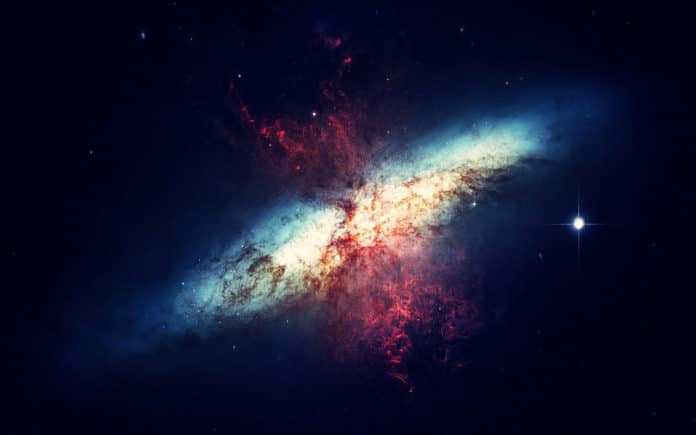A new study examined the effects of the supermassive black hole at our galaxy’s center on the atmosphere of planets in the Milky Way. To determine, scientists mainly focused on two fundamental mechanisms: 1. How can black hole winds heat atmospheres and drive atmospheric escape? 2. How can they stimulate the formation of nitrogen oxides and thus lead to ozone depletion?
This study is conducted by the team of astrobiologist Manasvi Lingam and astrophysicist Eric Perlman from Florida Tech’s Department of Aerospace, Physics, and Space Sciences and researchers from the University of Rome, University of Maryland, and Goddard Space Flight Center.
Using a newly developed model, the team determined how black holes can affect a planet’s atmosphere. Their model estimated the maximal distance up to which these effects are rendered significant for Earth-like planets in the Milky Way. This shows that this value can extend over 3,000 lightyears. In the case of quasars hosting larger supermassive black holes, the research found that such effects could influence the black hole’s host galaxy.
Astrobiologist Manasvi Lingam from Florida Tech’s Department of Aerospace, Physics and Space Sciences said, “It turns out that when you have a supermassive black hole that is active, it not only produces radiation, but it also produces a lot of high energy particles that are powered by the black hole. It is easy to visualize it as a fast-moving wind, like an extremely amplified hurricane. You have this wind of high energy particles emanating from the black hole’s vicinity at 10% the speed of light, more than a thousand times faster than our current spacecraft.”
The radiation from the black hole contains photons. But, if nothing can escape from the black hole, how is this light being emitted and the high-energy particles in the wind?
There is a lot of gas surrounding the black hole. The black hole starts swallowing some of that gas. But it doesn’t eat it up efficiently: as the black hole is consuming more and more gas, the gas is falling in towards the black hole.
When the material falls inwards into the black hole, it gets heated. The friction experienced by the gas spiraling inwards towards the black hole leads to it getting heated and eventually releasing energy in the form of photons.
Lingam said, “Think of it as a form of interstellar indigestion. This radiation can bombard the atmosphere. It can lead to those atmospheres getting eroded. It can supply lots of UV radiation; it can be harmful to biology. Some of the same ramifications apply to the high-speed winds from the black hole. These were some of the many effects that we looked at.”
“There’s still a lot of black hole wind research that remains to be done. The model considers the uniform expansion of wind throughout space. In contrast, future work would need to examine the emission of radiation and winds in the form of jets, which he hopes to investigate with Perlman and his Italian colleagues.”
“For those worried about radiation and winds from the Milky Way‘s supermassive black hole affecting Earth, there is no reason to be concerned.”
“The good thing we learned during this work is that a lot of these effects extend up to 3,000 lightyears, maybe 5,000 lightyears, in some extreme cases. But the earth, fortunately, is located 26,000 lightyears from the center of the Milky Way, so it’s comfortably outside that zone of influence, if we can call it that, of the black hole activity. Therefore, we might consider ourselves fortunate to inhabit this relatively peaceful region of our galaxy.”
Journal Reference:
- A Ambrifi, A Balbi et al. The impact of AGN outflows on the surface habitability of terrestrial planets in the Milky Way. DOI: 10.1093/mnras/stac542
